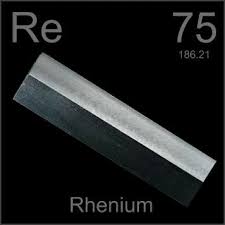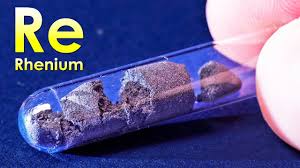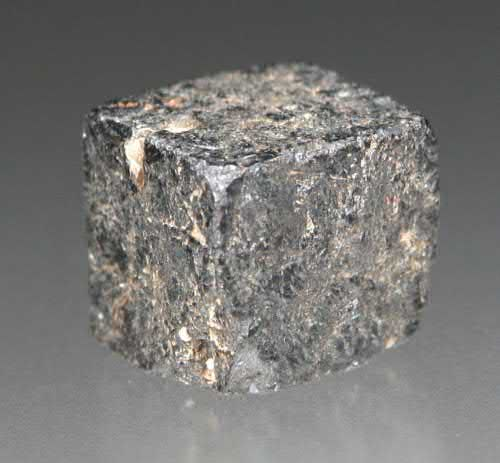Rhenium:Discovery,Minerals,Chemistry,Uses,Toxicity
Rhenium exists as one stable isotope, 185Re, occurring in minority abundance. It is a silvery-white metal with one of the highest melting points of all elements, exceeded by only tungsten and carbon. It also has one of the highest boiling points of all elements. In addition, it is one of the densest, exceeded only by platinum, iridium, and osmium. Rhenium has a hcp crystal structure, with lattice parameters a=276.1 pm and c=445.6 pm.
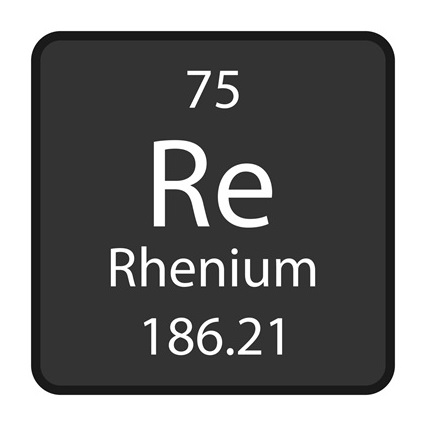
Discovery
Rhenium (Latin: Rhenus meaning: “Rhine,”one of the major rivers in Europe) was the second last-found of the elements that have a stable isotope. The presence of a yet-undiscovered element at this place in the periodic table had originally been projected by Russian chemist Dmitri Mendeleev (February 8, 1834 to February 2, 1907). Further calculated data were determined by English physicist Henry Moseley (November 23, 1887 to August 10, 1915) in 1914 (Moseley, 1913,1914).
Major minerals
Rhenium is one of the rarest elements in the Earth's crust with an average concentration of 0.5 to 1 ppb making it the 77th most abundant element in the Earth's crust. Rhenium occurs in concentrations up to 0.2% in molybdenite (MoS2), the major commercial source, even though single molybdenite samples with up to 1.88% have been discovered. Industrial rhenium is separated from molybdenum roaster-flue gas obtained from copper sulfide ores. Some molybdenum ores contain 0.001% to 0.2% rhenium. Rhenium is only known in three minerals, as the native element rhenium (Re) and two sulfides, rheniite (ReS2) and tarkianite ((Cu, Fe)(Re, Mo)4S8).
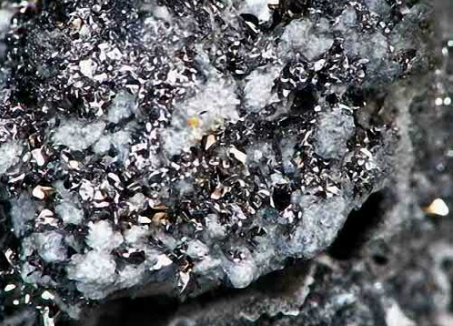
Chemistry
In bulk form and at ambient conditions, it resists alkalis, sulfuric acid, hydrochloric acid, dilute (but not concentrated) nitric acid, and aqua regia. Rhenium compounds are known for all the oxidation states between 23 and 17 except 22. The oxidation states 17, 16, 14, and 12 are the most common.
Uses
The high-temperature stability, low vapor pressure, good wear resistance, and the ability to withstand arc corrosion of Re are advantageous in self-cleaning electrical contacts. Especially the discharge occurring during the switching oxidizes the contacts. But Re2O7 has poor stability (sublimes at B360℃) and consequently is removed during the discharge. 188Re and 186Re are radioactive isotopes, that are utilized for the treatment of liver cancer. They both have comparable penetration depth in tissues (5 mm for 186Re and 11 mm for 188Re), but 186Re has the advantage of a longer half-life(90 vs 17 h). 188Re is experimentally being trialed in a new treatment of pancreatic cancer where it is delivered through the bacterium Listeria monocytogenes.
Toxicity
Very little is known about the toxicity of rhenium and its compounds because they are used in very small amounts. Soluble salts, such as the rhenium halides or perrhenates, could be hazardous due to elements other than rhenium or due to rhenium itself. Only a few compounds of rhenium have been tested for their acute toxicity; two examples are potassium perrhenate and rhenium trichloride, which were injected as a solution into rats. The perrhenate had an LD50 value of 2800 mg/kg after seven days (this is very low toxicity, similar to that of table salt) and the rhenium trichloride showed an LD50 of 280 mg/kg.
You may like
Related articles And Qustion
Lastest Price from RHENIUM manufacturers
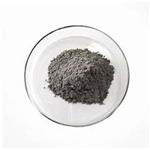
US $6.00/kg2025-04-21
- CAS:
- 7440-15-5
- Min. Order:
- 1kg
- Purity:
- 99%
- Supply Ability:
- 2000KG/Month

US $150.00/kg2025-04-21
- CAS:
- 7440-15-5
- Min. Order:
- 1kg
- Purity:
- 99%
- Supply Ability:
- 500kg

